
Vegetables are healthy and nutritious foods.
This article provides a list of 59 types of vegetables and their nutrition profiles.
If you’re looking for a specific vegetable, you can use the menu below.
On the other hand, just keep reading for an A to Z list of popular (and lesser-known) vegetables.
For each vegetable, you can see the nutrition profile per 100g unless otherwise stated.
This includes the carbohydrate, fat, and protein content and the most significant vitamins and minerals.
Types of Vegetables
1. Artichoke
Artichoke (or artichoke heart) is a kind of thistle.
Interestingly, this vegetable is actually the flower buds of the plant before they bloom.
Nutritionally, artichokes offer a decent mix of vitamins and minerals per 100g (1);
- Calories: 47 kcal
- Carbohydrate: 10.5 g
- Fiber: 5.4 g
- Sugar: 1.0 g
- Fat: 0.2 g
- Protein: 3.3 g
- Vitamin C: 20% RDA
- Vitamin K1: 18% RDA
- Folate: 17% RDA
- Magnesium: 15% RDA
- Manganese: 13% RDA
2. Arugula
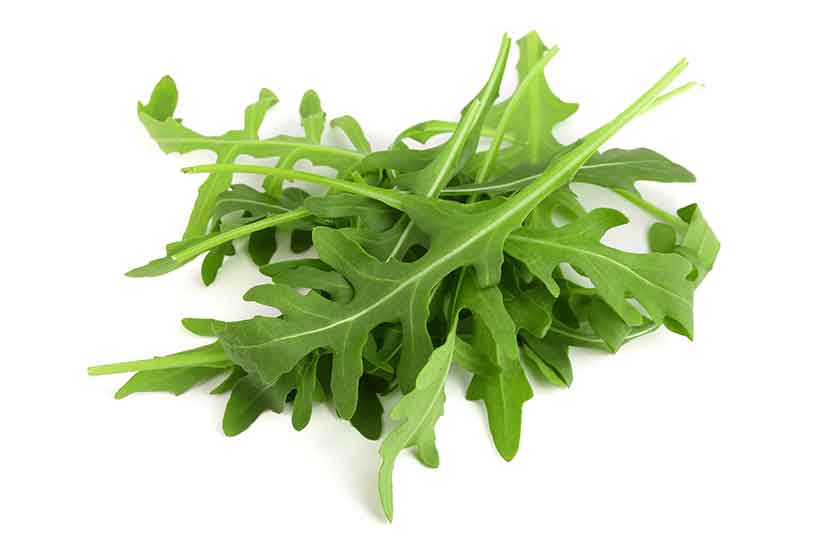
Arugula leaves are otherwise known as ‘rocket’, and they are particularly popular in the Mediterranean and Middle-East.
In fact, arugula is one of the tastiest foods on this vegetable list, and it adds a complex flavor to any dish.
These leaves are relatively nutrient-dense too, and their nutritional profile looks like the following (2);
- Calories: 25 kcal
- Carbohydrate: 3.7 g
- Fiber: 1.6 g
- Sugar: 2.1 g
- Fat: 0.7 g
- Protein: 2.6 g
- Vitamin K1: 136% RDA
- Vitamin A: 47% RDA
- Vitamin C: 25% RDA
- Folate: 24% RDA
- Calcium: 16% RDA
3. Asparagus

Out of all the different vegetables in the world, asparagus has a good argument for being the tastiest.
After all, it’s often the one which steakhouses serve alongside the main attraction.
As well as being one of the tastiest vegetables, it provides a good source of nutrition too (3);
- Calories: 20 kcal
- Carbohydrate: 4.0 g
- Fiber: 2.1 g
- Sugar: 1.9 g
- Fat: 0.1 g
- Protein: 2.2 g
- Vitamin K1: 52% RDA
- Vitamin A: 15% RDA
- Folate: 13% RDA
- Iron: 12% RDA
- Vitamin B1: 10% RDA
4. Bell Peppers
Bell peppers come in all colors, shapes, and sizes.
However, they all taste a little bit different, and red bell peppers are a little sweeter than yellow bell peppers. In the same fashion, yellow bell peppers are slightly sweeter than green bell peppers.
Technically bell peppers are a fruit, but since most people use them as a vegetable, they make this list.
Nutritionally, each color pepper has a very slight difference, but they are fairly similar.
Here is the nutrition profile for a large yellow bell pepper (4);
- Calories: 27 kcal
- Carbohydrate: 6.3 g
- Fiber: 0.9 g
- Sugar: ~ g
- Fat: 0.2 g
- Protein: 1.0 g
- Vitamin C: 306% RDA
- Vitamin B6: 8% RDA
- Folate: 6% RDA
- Potassium: 6% RDA
- Manganese: 6% RDA
See this article on the nutritional benefits of bell peppers for more a full guide.
5. Beet Greens

The leaves of the beetroot plant are incredibly nutritious, so don’t throw them away!
Out of all plant foods, beet greens are one of the most impressive for nutrient density (5);
- Calories: 22 kcal
- Carbohydrate: 4.3 g
- Fiber: 3.7 g
- Sugar: 0.5 g
- Fat: 0.1 g
- Protein: 2.2 g
- Vitamin K1: 500% RDA
- Vitamin A: 127% RDA
- Vitamin C: 50% RDA
- Potassium: 22% RDA
- Manganese: 20% RDA
See this guide to leafy greens for an in-depth look at the nutritional benefits of leafy vegetables.
6. Beets / Beetroot
Depending on where you are from, beets (or beetroot) goes by different names.
Beets are a root vegetable, and they are quite adaptable too. For instance, they can be boiled, fried, roasted, mashed, or you can even buy pickled beets.
Consuming beets leads to a large intake of nitrate, which has many purported health benefits. Most notably, nitrate helps to lower blood pressure (6).
This vegetable also has a reasonably decent mix of micronutrients (7);
See here for a full guide to beets
- Calories: 43 kcal
- Carbohydrate: 9.6 g
- Fiber: 2.8 g
- Sugar: 6.8 g
- Fat: 0.2 g
- Protein: 1.6 g
- Folate: 27% RDA
- Manganese: 16% RDA
- Potassium: 9% RDA
- Vitamin C: 8% RDA
- Magnesium: 6% RDA
7. Bok Choy

Some people call it ‘Chinese cabbage’, but the proper translation is bok choy.
Bok choy belongs to the cruciferous vegetable family, alongside others such as cabbage and brussels sprouts.
It’s a tasty vegetable that features in a wide variety of Asian dishes, and it’s rich in nutrients too (8);
- Calories: 13 kcal
- Carbohydrate: 2.2 g
- Fiber: 1.0 g
- Sugar: 1.2 g
- Fat: 0.2 g
- Protein: 1.5 g
- Vitamin A: 89% RDA
- Vitamin C: 75% RDA
- Vitamin K: 57% RDA
- Folate: 16% RDA
- Calcium: 11% RDA
Learn more about bok choy here.
8. Bottle Gourd
Bottle gourd is a member of the squash family, and it has a unique hourglass shape.
In addition to offering vitamin C and a moderate amount of fiber, bottle gourd is a rich source of phytonutrients.
Nutritionally, 100 grams (raw weight) of bottle gourd provides (9):
- Calories: 14 kcal
- Carbohydrate: 3.39 g
- Fiber: 0.5 g
- Fat: 0.02 g
- Protein: 0.62 g
- Vitamin C: 11% DV
- Zinc: 6% DV
- Potassium: 3% DV
- Copper: 3% DV
- Manganese: 3% DV
For more information, see this guide to bottle gourd:
5 Nutritional Benefits of Bottle Gourd (Calabash)
9. Broccoli
Broccoli is another nutritious cruciferous vegetable, and numerous studies show it can lower the risk of various cancers (10, 11).
Interestingly, wild broccoli doesn’t exist, and the vegetable was “made” by man through selectively breeding cabbage plants.
Man-made or not, it has an impressive range of nutrients (12):
- Calories: 34 kcal
- Carbohydrate: 6.6 g
- Fiber: 2.6 g
- Sugar: 1.7 g
- Fat: 0.4 g
- Protein: 2.8 g
- Vitamin C: 149% RDA
- Vitamin K1: 127% RDA
- Folate: 16% RDA
- Vitamin A: 12% RDA
- Manganese: 13% RDA
10. Broccoli Rabe (Rapini)

A lesser-known vegetable is broccoli rabe (also called ‘rapini’).
Despite containing the broccoli name and belonging to the same family of plants, they are two separate vegetables.
Rapini has a strong, flavorful but slightly bitter taste, and it’s commonly found in the Mediterranean region’s cuisine.
Nutritionally speaking, broccoli rabe has a lot to offer (13);
- Calories: 22 kcal
- Carbohydrate: 3.1 g
- Fiber: 2.7 g
- Sugar: 0.4 g
- Fat: 0.5 g
- Protein: 3.2 g
- Vitamin K1: 280% RDA
- Vitamin A: 52% RDA
- Vitamin C: 34% RDA
- Folate: 21% RDA
- Manganese: 20% RDA
11. Brussels Sprouts
Brussels sprouts are one of the more interesting looking plant foods. In fact, they look like little mini cabbages.
Sprouts belong to the cruciferous category of vegetables, and they share some common benefits with broccoli and cabbage.
They taste particularly good with a roast dinner or mixed with bacon.
A look at their nutritional values show they’re a good choice of vegetable too (14);
- Calories: 43 kcal
- Carbohydrate: 9 g
- Fiber: 3.8 g
- Sugar: 2.2 g
- Fat: 0.2 g
- Protein: 3.4 g
- Vitamin K1: 221% RDA
- Vitamin C: 142% RDA
- Manganese: 117% RDA
- Folate: 15% RDA
- Vitamin A: 15% RDA
12. Butternut Squash

Butternut squash is the second on this vegetable list that is technically a fruit. However, similar to bell peppers, everyone uses it as a vegetable.
Butternut squash has a taste not dissimilar to a pumpkin, with a sweet and nutty flavor.
It is also very adaptable, and features in a wide range of recipes whether grilled or roasted, or in soups and porridge.
With a bright orange flesh, this squash is also very high in vitamin A (15);
- Calories: 40 kcal
- Carbohydrate: 10 g
- Fiber: ~ g
- Sugar: 2.0 g
- Fat: 0.1 g
- Protein: 0.9 g
- Vitamin A: 223% RDA
- Vitamin C: 25% RDA
- Manganese: 9% RDA
- Potassium: 8% RDA
- Magnesium: 7% RDA
13. Cabbage (Green)
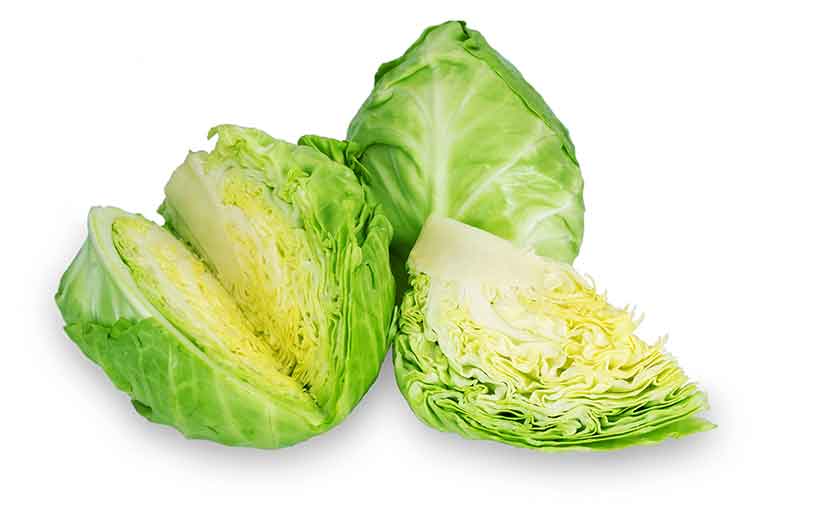
Cabbage is a large-headed green vegetable that has close botanical links to broccoli, cauliflower, and brussels sprouts.
Cabbage belongs to the cruciferous category of vegetables and like others, it has links to similar anti-cancer health benefits.
Nutritionally, they offer (16);
- Calories: 25 kcal
- Carbohydrate: 5.8 g
- Fiber: 2.5 g
- Sugar: 3.2 g
- Fat: 0.1 g
- Protein: 1.3 g
- Vitamin K1: 95% RDA
- Vitamin C: 61% RDA
- Folate: 11% RDA
- Manganese: 8% RDA
- Vitamin B6: 6% RDA
14. Cabbage (Red)
Green and red cabbage are different in color, but they are basically the same type of vegetable.
Despite a similar appearance, the major contrast is the dark red/purple leaves of red cabbage.
Interestingly, the nutrient profile of red cabbage is slightly different, and it offers more in the way of vitamins and minerals (17);
- Calories: 31 kcal
- Carbohydrate: 7.4 g
- Fiber: 2.1 g
- Sugar: 3.8 g
- Fat: 0.2 g
- Protein: 1.4 g
- Vitamin C: 95% RDA
- Vitamin K1: 48% RDA
- Vitamin A: 22% RDA
- Manganese: 12% RDA
- Vitamin B6: 10% RDA
15. Carrots

Carrots are a sweet-tasting, bright orange root vegetable.
See here for a full guide to root vegetables.
However, it is possible to find rarer cultivars of the vegetable that are red, yellow and even black.
Carrots grow underground, and they are mainly known for their high vitamin A (in the form of beta-carotene) content.
That said, it’s essential to eat them with a source of fat if you want to absorb this (fat-soluble) vitamin.
For instance, we can only digest 3% of the vitamin in raw carrots. This figure rises to 39% in carrots cooked with fat (18).
Here are the nutrition values in full (19);
- Calories: 41 kcal
- Carbohydrate: 9.6 g
- Fiber: 2.8 g
- Sugar: 4.7 g
- Fat: 0.2 g
- Protein: 0.9 g
- Vitamin A: 334% RDA
- Vitamin K1: 16% RDA
- Vitamin C: 10% RDA
- Potassium: 9% RDA
- Vitamin B6: 7% RDA
See this guide to the nutritional benefits of carrots for more information.
16. Cauliflower
Right now, cauliflower is one of the most popular types of vegetables around.
You can find all sorts of cauliflower products, ranging from cauliflower rice to mashed cauliflower.
For home-baking enthusiasts, cauliflower pizza is even a thing. In my opinion, though, cauliflower cheese will always be the best.
On the positive side, this vegetable is reasonably nutritious too; the macro and micronutrient composition looks like this (20);
- Calories: 25 kcal
- Carbohydrate: 5.3 g
- Fiber: 2.5 g
- Sugar: 2.4 g
- Fat: 0.1 g
- Protein: 2.0 g
- Vitamin C: 77% RDA
- Vitamin K1: 20% RDA
- Folate: 14% RDA
- Vitamin B6: 11% RDA
- Potassium: 9% RDA
17. Celery

Usually eaten in its raw state, celery is a popular salad vegetable with high water content.
Notably, quite a lot of research shows that celery may have some interesting health properties too.
According to one systematic review, the vegetable can have a positive impact on fertility (21).
Celery offers the following vitamins and minerals (22);
- Calories: 16 kcal
- Carbohydrate: 11.7 g
- Fiber: 1.6 g
- Sugar: 1.8 g
- Fat: 0.2 g
- Protein: 0.7 g
- Vitamin K1: 37% RDA
- Vitamin A: 9% RDA
- Folate: 9% RDA
- Potassium: 7% RDA
- Manganese: 5% RDA
18. Chives
Chives provide a delicious flavor to any dish, and they also taste great on their own.
Often used as a flavoring herb, chives are a key feature in French cuisine, and a little goes a long way.
Slightly similar to regular chives, garlic chives (or ‘Chinese chives’) are another variety of this vegetable. However, these are used more like a standard vegetable than like a herb.
Chives are very nutrient-dense, and they supply (23);
- Calories: 30 kcal
- Carbohydrate: 15.9 g
- Fiber: 2.5 g
- Sugar: 1.9 g
- Fat: 0.7 g
- Protein: 3.3 g
- Vitamin K1: 266% RDA
- Vitamin C: 97% RDA
- Vitamin A: 87% RDA
- Folate: 26% RDA
- Manganese: 19% RDA
19. Collard Greens

As their name may suggest, collard greens are a leafy green vegetable.
This vegetable is popular throughout the world, and it is usually served either boiled, steamed, or in stews.
Collard greens have a slightly bitter flavor, and they provide a wide range of nutrients.
In fact, they are among the most nutrient-dense options on this list of vegetables (24);
- Calories: 30 kcal
- Carbohydrate: 5.7 g
- Fiber: 3.6 g
- Sugar: 0.5 g
- Fat: 0.4 g
- Protein: 2.5 g
- Vitamin K1: 638% RDA
- Vitamin A: 133% RDA
- Vitamin C: 59% RDA
- Folate: 41% RDA
- Manganese: 14% RDA
20. Crookneck Squash
Some types of veggies have strange names, and this one certainly belongs to that group.
The crookneck squash is a bright yellow vegetable with a crooked hook-like neck.
Similar to other vegetables in the squash category, crookneck squashes have a mild, buttery taste.
Nutrient-wise, they supply (25);
- Calories: 25 kcal
- Carbohydrate: 5.5 g
- Fiber: 1.4 g
- Sugar: 2.3 g
- Fat: 0.2 g
- Protein: 1.3 g
- Manganese: 13% RDA
- Vitamin C: 11% RDA
- Potassium: 7% RDA
- Magnesium: 7% RDA
- Vitamin K1: 7% RDA
21. Daikon Radish

The daikon radish is native to East and South-East Asia.
Daikon radish has numerous culinary uses, and many different pickles, salads, soups and stews are made with it.
It is very low in calories, yet supplies a reasonable range of nutrients (26);
- Calories: 18 kcal
- Carbohydrate: 4.1 g
- Fiber: 1.6 g
- Sugar: 2.5 g
- Fat: 0.1 g
- Protein: 0.6 g
- Vitamin C: 37% RDA
- Folate: 17% RDA
- Copper: 6% RDA
- Potassium: 6% RDA
- Magnesium: 4% RDA
For more information, see this complete nutritional guide to daikon radish:
5 Benefits of Daikon Radish (and Full Nutritional Values)
22. Dandelion Greens
Dandelion greens are another leafy green with impressive nutrient density.
We often eat them raw, and they have a bitter and slightly peppery taste. However, like many vegetables, they have a more pleasant flavor after cooking.
Dandelion greens are high in calcium, and they provide a rare source of vitamin E too. The overall nutrient profile looks like this (27);
- Calories: 45 kcal
- Carbohydrate: 9.2 g
- Fiber: 3.5 g
- Sugar: 0.7 g
- Fat: 0.7 g
- Protein: 2.7 g
- Vitamin K1: 973% RDA
- Vitamin A: 203% RDA
- Vitamin C: 58% RDA
- Calcium: 19% RDA
- Vitamin E: 17% RDA
23. Eggplant (Aubergine)

While it goes by the name of eggplant in the US, the UK uses the French name of aubergine.
This vegetable belongs to the nightshade family of plants, alongside others such as tomatoes, bell peppers, and tomatillos.
It seems that with eggplant, people either love it or hate it – and the way of cooking probably has a lot to do with it.
Boiled eggplant? Not so tasty.
On the other hand, roasted eggplant cooked with some fat tastes delicious.
Eggplants offer the following nutrients (28);
- Calories: 24 kcal
- Carbohydrate: 5.7 g
- Fiber: 3.4 g
- Sugar: 2.4 g
- Fat: 0.2 g
- Protein: 1.0 g
- Manganese: 13% RDA
- Potassium: 7% RDA
- Folate: 5% RDA
- Vitamin C: 4% RDA
- Copper: 4% RDA
24. Endive
Endive, otherwise known as chicory, is a leafy green vegetable that has a bitter, yet slightly sweet taste.
It belongs to the same family of vegetables as radicchio and curly endive.
Endive is a relatively nutrient-rich vegetable that people often use in salad, but it tastes much better grilled (29);
- Calories: 17 kcal
- Carbohydrate: 3.4 g
- Fiber: 3.1 g
- Sugar: 0.3 g
- Fat: 0.2 g
- Protein: 1.3 g
- Vitamin K1: 289% RDA
- Vitamin A: 43% RDA
- Folate: 35% RDA
- Manganese: 21% RDA
- Vitamin C: 11% RDA
There are two main types of endive: curly endive and escarole. You can find a guide to the nutritional benefits of escarole here:
5 Benefits of Escarole (With Full Nutrition Facts)
25. Garlic
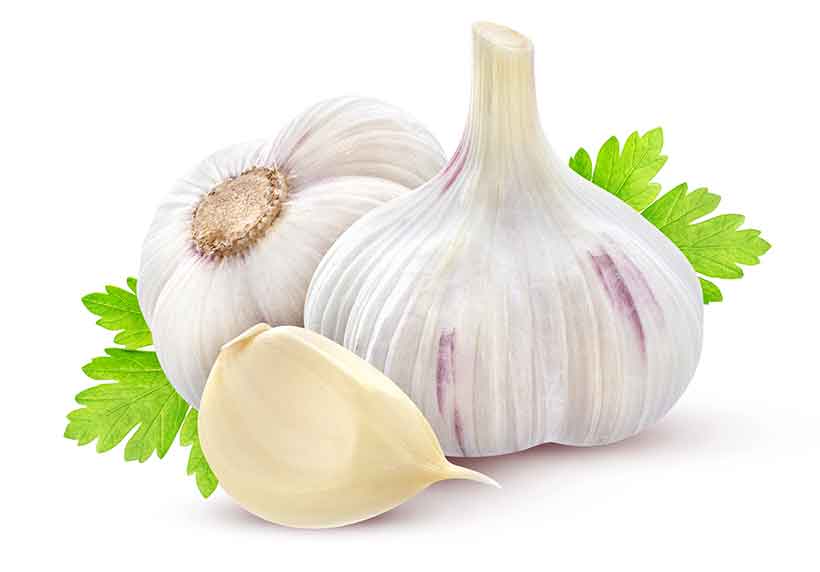
Garlic is one of those types of vegetables that confuses people; is it truly a vegetable?
Or is it a herb?
While some people refer to garlic as a herb, it is a type of bulb, and it is more accurate to call it a root vegetable.
However, although roasted garlic tastes delicious, garlic is frequently used in small doses as a herb for flavoring.
Garlic has a lot of research behind it, and studies indicate that it may help with lowering blood pressure (30).
Nutritionally, it offers (31);
- Calories: 149 kcal
- Carbohydrate: 33.1 g
- Fiber: 2.1 g
- Sugar: 1.0 g
- Fat: 0.5 g
- Protein: 6.4 g
- Manganese: 84% RDA
- Vitamin B6: 62% RDA
- Vitamin C: 52% RDA
- Selenium: 20% RDA
- Calcium: 18% RDA
Garlic belongs to the allium family of vegetables. For more information on these specific vegetables, please refer to the following guide:
A List of Allium Vegetables and Their Nutritional Benefits
26. Green Amaranth Leaves
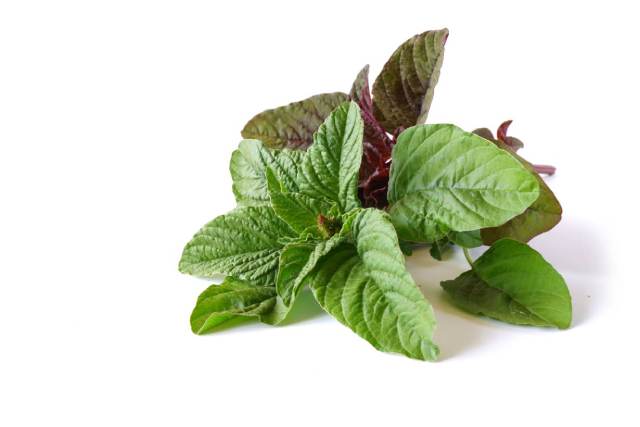
Green amaranth leaves are a nutritious green vegetable that has a similar nutritional profile to spinach.
These leafy greens have a mild and enjoyable sweet, nutty taste, and they are very popular in Chinese cuisine.
Nutritionally, 100 grams of these leaves provides (32):
- Calories: 23 kcal
- Carbohydrate: 4.02 g
- Fat: 0.33 g
- Protein: 2.46 g
- Vitamin K1: 950% DV
- Vitamin C: 48% DV
- Manganese: 39% DV
- Copper: 18% DV
- Calcium: 17% DV
For more information, see here: Green Amaranth Leaves: A Nutritional Guide
27. Green Onion (Spring Onion)
Green (or spring) onions are a vegetable closely related to others in the Allium family, such as garlic, chives, and onions.
They have a similar (but milder and sweeter) taste to regular onions.
Green onions taste great when grilled whole and they also add a lot of flavor to stews and other dishes.
Also, this vegetable is relatively dense in vitamins – notably vitamins A, C, and K (33);
- Calories: 25 kcal
- Carbohydrate: 5.6 g
- Fiber: 3.5 g
- Sugar: 2.1 g
- Fat: 0.1 g
- Protein: 1.8 g
- Vitamin K1: 209% RDA
- Vitamin A: 80% RDA
- Vitamin C: 76% RDA
- Iron: 11% RDA
- Vitamin B2: 8% RDA
28. Jicama (Mexican Yam Bean)

Jicama is a kind of tuberous vegetable that is native to Mexico.
Tuberous vegetables are commonly known as ‘tubers’ and you can learn more about them here:
Types of Tubers and Their Nutritional Values
On the outside, jicama looks a little bit like an onion, with a yellow exterior and white inner flesh.
In terms of taste and texture, it is sweet and crunchy.
This root vegetable has a high water content, and it’s also high in fiber and vitamin C (34);
- Calories: 38 kcal
- Carbohydrate: 5.6 g
- Fiber: 4.9 g
- Sugar: 1.8 g
- Fat: 0.1 g
- Protein: 0.7 g
- Vitamin C: 34% RDA
- Potassium: 4% RDA
- Magnesium: 3% RDA
- Manganese: 3% RDA
29. Kale

Kale is a member of the cruciferous family of vegetables, and it shares some similarities to cabbage and broccoli.
Personally, I’m not a huge fan of kale’s bitter taste. However, it has rapidly grown in popularity over the past several years as people find out about its health properties.
In terms of nutrients, kale has a shout for being one of the healthiest vegetables out there.
Kale provides an enormous amount of vitamin K1, beta-carotene, and vitamin C (35);
- Calories: 50 kcal
- Carbohydrate: 10 g
- Fiber: 2.0 g
- Sugar: ~ g
- Fat: 0.7 g
- Protein: 3.3 g
- Vitamin K1: 1021% RDA
- Vitamin A: 308% RDA
- Vitamin C: 200% RDA
- Manganese: 39% RD
- Calcium: 14% RDA
For more information, see this full guide to kale.
30. Kimchi

Kimchi is a spicy fermented cabbage side-dish originating in Korea.
It combines cabbage, garlic, ginger, red chili pepper, salt, and fermented fish sauce.
Kimchi isn’t a vegetable as such, but it’s very popular and so different to regular cabbage.
In addition to the nutrients present in cabbage, garlic, and ginger, kimchi provides a host of probiotic bacteria.
Also, due to the fermentation process, the nutrients in all the vegetables are easier to digest and absorb (36).
Nutritionally, a typical kimchi provides the following carbohydrate, fat and protein content (37);
- Calories: 15 kcal
- Carbohydrate: 2.4 g
- Fat: 0.5 g
- Protein: 1.1 g
31. Kohlrabi
Kohlrabi is an interesting looking vegetable; it looks something like a turnip with long large green leaves.
It is a biennial type of vegetable, which makes it a flowering plant with a two-year lifecycle.
For example, this means the vegetable will only bloom after two years.
Kohlrabi is primarily a good source of vitamin C (38);
- Calories: 27 kcal
- Carbohydrate: 6.2 g
- Fiber: 3.6 g
- Sugar: 2.6 g
- Fat: 0.1 g
- Protein: 1.7 g
- Vitamin C: 103% RDA
- Potassium: 10% RDA
- Vitamin B6: 8% RDA
- Manganese: 7% RD
- Copper: 14% RDA
32. Leeks

Leeks are a tasty vegetable that add a lot of flavor when used in cooking.
They are long, with greenish-white stalks reminiscent of green onions, another member of the allium family.
However, leeks have a much sweeter and milder taste.
Concerning their nutritional value, leeks provide a varied mix of vitamins and minerals (39);
- Calories: 61 kcal
- Carbohydrate: 14.2 g
- Fiber: 1.8 g
- Sugar: 3.9g
- Fat: 0.3 g
- Protein: 1.5 g
- Vitamin K1: 59% RDA
- Vitamin A: 33% RDA
- Manganese: 24% RDA
- Vitamin C: 20% RDA
- Folate: 16% RDA
See this full guide to leeks for more information on their potential benefits.
33. Lettuce
Lettuce is one of the most popular varieties of vegetables.
You can find it pretty much everywhere too; burgers, sandwiches, salads, or just decorating the sides of a plate.
Lettuce has an extremely high water content, which makes it quite crisp and refreshing.
Nutritionally it’s not so bad either; lettuce provides a lot of nutrients for minimal energy (40);
- Calories: 15 kcal
- Carbohydrate: 2.8 g
- Fiber: 1.3 g
- Sugar: 0.8g
- Fat: 0.2 g
- Protein: 1.4 g
- Vitamin K1: 141% RDA
- Vitamin A: 148% RDA
- Vitamin C: 30% RDA
- Manganese: 130% RDA
- Folate: 10% RDA
34. Lotus Root
Lotus root is a versatile root vegetable that is relatively uncommon in Western countries.
However, lotus root is a common vegetable in India and East Asia, and it can be used in a variety of ways.
Per 100 grams, cooked lotus root provides (41):
- Calories: 66 kcal
- Carbohydrate: 16.0 g
- Fiber: 3.1 g
- Sugar: 0.5g
- Fat: 0.1 g
- Protein: 1.6 g
For more information, see this complete guide:
5 Benefits of Lotus Root (With Nutrition Facts)
35. Mushrooms

Among this list of vegetables, mushrooms stand alone.
Why?
Because they are not technically a vegetable, a fruit, or any other kind of plant. They belong to a class of their own.
However, since we commonly use mushrooms in the same way as vegetables, here they are.
Mushrooms contain a vast range of phytonutrients, some of which are unique. Additionally, numerous studies show they have anti-inflammatory and anti-microbial properties (42).
As shown below, mushrooms contain some vitamins and minerals too (43);
See here for an in-depth guide to all edible mushrooms
- Calories: 27 kcal
- Carbohydrate: 16.1 g
- Fiber: 0.6 g
- Sugar: 1.7g
- Fat: 0.1 g
- Protein: 2.5 g
- Selenium: 37% RDA
- Vitamin B2: 29% RDA
- Copper: 25% RDA
- Vitamin B3: 19% RDA
- Vitamin B5: 15% RDA
36. Mustard Greens
Mustard greens are another nutrient-dense leafy green.
Depending on where you are in the world, you may also hear people refer to them as Chinese, Indian, Oriental or vegetable mustard.
These leaves have a peppery taste to them, and they are often eaten raw in salads (or juiced).
However, like many vegetables, they taste much better after cooking; sauteed mustard greens in garlic butter is a delicious side to meat/fish.
Similar to other leafy green vegetables, mustard greens are packed with nutrients (44);
- Calories: 26 kcal
- Carbohydrate: 4.9 g
- Fiber: 3.3 g
- Sugar: 1.6g
- Fat: 0.2 g
- Protein: 2.7 g
- Vitamin K1: 622% RDA
- Vitamin A: 210% RDA
- Vitamin C: 117% RDA
- Folate: 47% RDA
- Manganese: 24% RDA
37. Okra
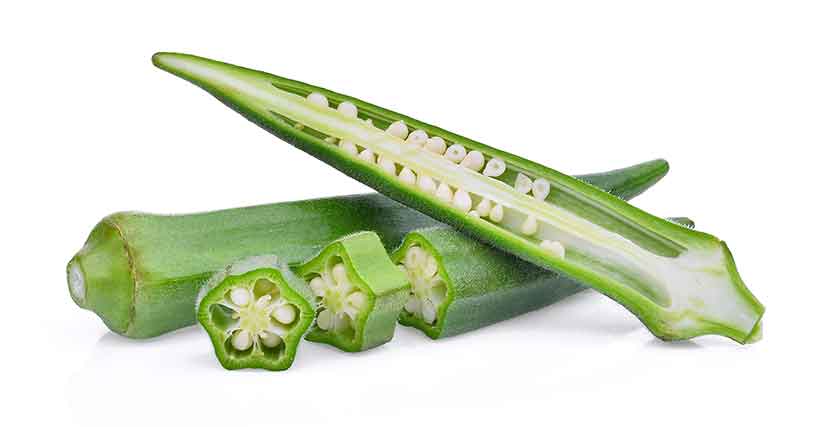
Okra is an unusual looking vegetable, and it is otherwise known as ‘ladies’ fingers’.
The vegetable has green stems that contain edible seeds, and both the outer and inner of the vegetable are eaten.
Okra can be served raw, cooked, and we can sometimes find it in salads.
It has a notably slimy texture.
Here are the nutritional properties of okra (45);
- Calories: 31 kcal
- Carbohydrate: 7.0 g
- Fiber: 3.2 g
- Sugar: 1.2g
- Fat: 0.2 g
- Protein: 2.0 g
- Vitamin K1: 66% RDA
- Manganese: 50% RDA
- Vitamin C: 35% RDA
- Folate: 22% RDA
- Magnesium: 14% RDA
38. Onions (Red)
Onions come in many varieties, but perhaps the most distinctive contrast is between the red and yellow onion.
Red onions have a lot of benefits too; they are more mild and sweet in taste, and they also contain more phytonutrients.
Similar to other dark red/blue plant foods, red onions are rich in a health-protective polyphenol called anthocyanins (46).
Red onions provide (47);
- Calories: 43 kcal
- Carbohydrate: 9.0 g
- Fiber: 2.0 g
- Sugar: 4.0g
- Fat: 0 g
- Protein: 1.0 g
39. Onions (Yellow)

Yellow onions are perhaps the most popular vegetable in the allium family.
It’s hard to pinpoint the taste of onions, but they are slightly sweet, spicy, bitter, and flavorful, all at the same time.
Grilled onions taste delicious, especially in combination with garlic and some steak.
However, most people use onions for flavoring, and adding chopped onions to a dish always boosts the taste.
The main nutrient that onions provide is vitamin C (48);
- Calories: 40 kcal
- Carbohydrate: 9.3 g
- Fiber: 1.7 g
- Sugar: 4.2g
- Fat: 0.1 g
- Protein: 1.1 g
- Vitamin C: 12% RDA
- Vitamin B6: 6% RDA
- Manganese: 6% RDA
- Folate: 5% RDA
- Potassium: 4% RDA
40. Parsnips
My favorite vegetable as a child was always parsnips.
They may look like a white carrot, but they taste completely different.
Parsnips are another biennial type of plant, and they are very versatile in the kitchen.
For example, we can roast, boil, or mash parsnips, or use them to make a variety of stews, soups,
Parsnips have a soft texture with a nutty/sweet flavor, and roasting them in the oven tastes particularly good,
Nutritionally, they are a good source of several nutrients (49);
- Calories: 75 kcal
- Carbohydrate: 18.0 g
- Fiber: 4.9 g
- Sugar: 4.8g
- Fat: 0.3 g
- Protein: 1.2 g
- Vitamin C: 28% RDA
- Manganese: 28% RDA
- Vitamin K1: 28% RDA
- Potassium: 11% RDA
- Magnesium: 7% RDA
For more on parsnips, see this complete guide to parsnips and their nutritional values.
41. Potatoes

While a traditional staple food in the East is rice, potatoes fill that bracket for much of the West.
Interestingly, there are many different types of potatoes, each of which have their own unique characteristics.
Nutritionally, potatoes are one of the higher carbohydrate sources on this list of vegetables.
However, they are not as high in carbs as many people presume. At around 18g carbohydrate per 100g, they are a lot lower than legumes and grains – and even some other vegetables.
Nutritionally, they provide a good source of potassium and vitamin C (50);
- Calories: 77 kcal
- Carbohydrate: 18.4 g
- Fiber: 2.2 g
- Sugar: 0.8g
- Fat: 0.1 g
- Protein: 2.0 g
- Vitamin C: 33% RDA
- Vitamin B6: 15% RDA
- Potassium: 12% RDA
- Manganese: 8% RDA
- Phosphorus: 6% RDA
Find out more about the nutritional benefits of potatoes here.
42. Pumpkin
Pumpkins are a kind of vegetable that become particularly popular at one time of year – Halloween.
They are delicious too, and after cooking, they provide a soft, sweet flesh that is quite nutritious also.
Although people use pumpkin as a vegetable, it isn’t a true veggie. Due to its flesh and seeds, it is botanically a fruit.
Pumpkins are an excellent source of vitamin A (as beta-carotene) (51);
- Calories: 26 kcal
- Carbohydrate: 6.5 g
- Fiber: 0.5 g
- Sugar: 1.4g
- Fat: 0.1 g
- Protein: 1.0 g
- Vitamin A: 148% RDA
- Vitamin C: 15% RDA
- Potassium: 10% RDA
- Copper: 6% RDA
- Manganese: 6% RDA
43. Purple Sweet Potato (Okinawan Yam)
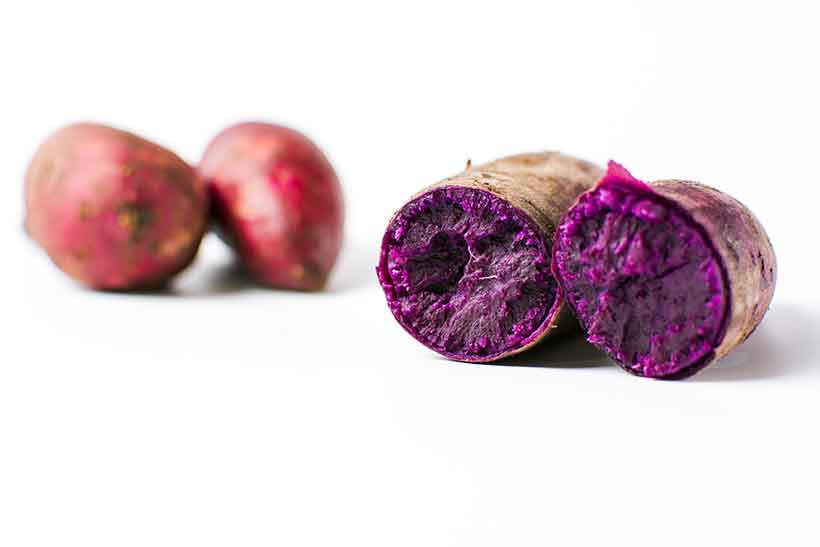
Although they look like different vegetables, the ‘Okinawan yam’ is a kind of sweet potato.
This purple sweet potato is a nutritious tuber that has some advantages over regular sweet potatoes.
For one thing, the brilliant purple color of this vegetable is due to the abundant supply of anthocyanins in the flesh.
The traditional long-lived Okinawans consumed most of their calories from purple sweet potatoes too.
As carbohydrate sources go, they’re certainly a better choice than the refined carbs in Western diets.
Purple sweet potatoes provide (52);
- Calories: 67 kcal
- Carbohydrate: 16.3 g
- Fat: 0.1 g
- Protein: 1.3 g
- Potassium: 12% RDA
- Manganese: 12% RDA
- Vitamin B6: 9% RDA
- Vitamin B1: 7% RDA
- Copper: 6% RDA
See here for a full nutritional guide to purple sweet potatoes.
44. Radicchio
Radicchio is a kind of chicory plant.
It originates in Italy and, for this reason, often goes by the name of ‘Italian chicory’.
This vegetable has a deep red to purple color, and it looks a little like the leaves of red cabbage.
Despite its color, radicchio is often classed as a “leafy green”.
It belongs to the leaf category of vegetables alongside others like spinach and swiss chard.
Similar to other leafy vegetables, radicchio is very rich in vitamin K1 (53);
- Calories: 23 kcal
- Carbohydrate: 4.5 g
- Fiber: 0.9 g
- Sugar: 0.6g
- Fat: 0.3 g
- Protein: 1.4 g
- Vitamin K1: 319% RDA
- Copper: 17% RDA
- Folate: 15% RDA
- Vitamin C: 13% RDA
- Vitamin E: 11% RDA
45. Radish
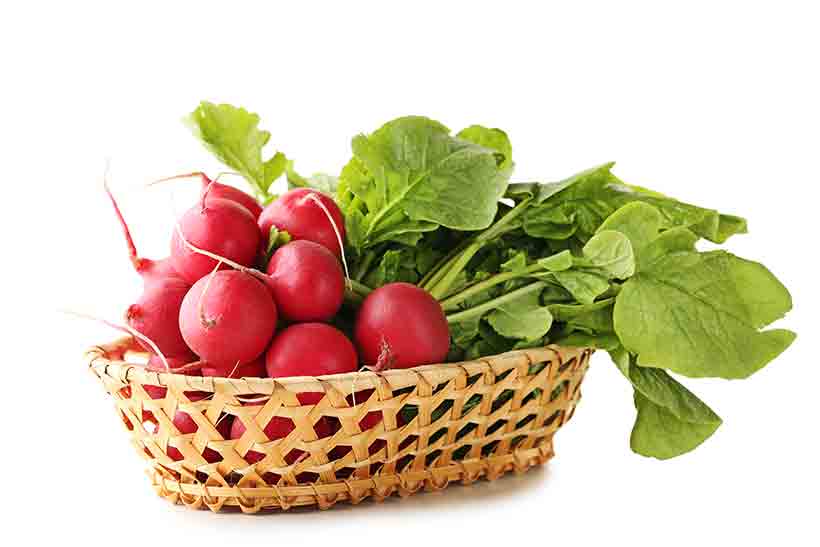
Radish is a small edible root vegetable with a red to pink color.
Radishes are popular throughout the world, and they are commonly eaten as a raw salad vegetable.
This root vegetable has a very bold taste too; crunchy, peppery and slightly spicy.
Radishes are very low in energy density, and they supply a reasonable amount of vitamin C (54);
- Calories: 16 kcal
- Carbohydrate: 3.5 g
- Fiber: 1.6 g
- Sugar: 1.9g
- Fat: 0.1 g
- Protein: 0.7 g
- Vitamin C: 25% RDA
- Potassium: 7% RDA
- Folate: 6% RDA
- Vitamin B6: 4% RDA
- Copper: 3% RDA
46. Swede (Rutabaga)
Despite being known throughout the world as ‘Swede’, this vegetable has the name of ‘rutabaga’ in the United States.
Not too surprisingly, Swedes originate from Sweden, where cultivation has occured for centuries.
Swedes are not an original vegetable, and they are a hybrid of cabbage and turnips.
We can eat this root vegetable in a variety of ways, from roasting, boiling and mashing, or even making chips/crisps.
Swedes are relatively high in vitamin C (55):
- Calories: 37 kcal
- Carbohydrate: 8.62 g
- Fiber: 2.3 g
- Sugar: 4.46g
- Fat: 0.16 g
- Protein: 1.08 g
- Vitamin C: 42% RDA
- Potassium: 10% RDA
- Manganese: 9% RDA
- Magnesium: 6% RDA
- Phosphorus: 6% RDA
47. Sauerkraut

Like kimchi, sauerkraut isn’t a real vegetable as such.
However, it is a fermented vegetable from Germany that is popular throughout the world.
Like all fermented foods, it contains a range of beneficial bacterias that can benefit health.
The primary bacteria in sauerkraut is called lactobacillus.
Research over 15 separate trials demonstrates that this probiotic may improve the lipid (cholesterol) profile (56).
Saurkraut’s nutritional profile is similar to cabbage, but the nutrients will be more bioavailable due to the fermentation process.
Note: the nutrient amounts seem lower, as the nutrient database lists 100g sauerkraut as “solids and liquid” (57);
- Calories: 22 kcal
- Carbohydrate: 4.3 g
- Fiber: 2.5 g
- Sugar: 1.8g
- Fat: 0.1 g
- Protein: 0.9 g
- Vitamin C: 24% RDA
- Vitamin K1: 16% RDA
- Manganese: 8% RDA
- Iron: 8% RDA
- Folate: 6% RDA
48. Seaweed
Seaweed is a family of sea vegetables that includes kelp, kombu, and wakame.
Further to its nutritional profile, seaweed offers a range of bioactive compounds such as fucoxanthin and fucoidan.
These compounds are phytonutrients that are unique to sea vegetation, and studies show they have potent anti-inflammatory effects (58).
Seaweed also contains a considerable amount of iodine.
Here is the nutrition profile of wakame seaweed (59);
- Calories: 45 kcal
- Carbohydrate: 9.1 g
- Fiber: 0.5 g
- Sugar: 0.7g
- Fat: 0.6 g
- Protein: 3.0 g
- Manganese: 70% RDA
- Folate: 49% RDA
- Magnesium: 27% RDA
- Calcium: 15% RDA
- Copper: 14% RDA
49. Shallots

Shallots belong to the allium family of vegetables, and they are a type of onion.
They are also one of the most delicious vegetables.
Although they may look like a regular onion, their taste is more flavorful and softer, sweeter, and milder.
Additionally, shallots don’t possess the sharp/strong flavor of regular onion, which makes them a favorite culinary choice.
Due to their milder taste, it’s also more common for them to be eaten raw.
Shallots contain a varied mix of vitamins and minerals too (60);
- Calories: 72 kcal
- Carbohydrate: 16.8 g
- Fat: 0.1 g
- Protein: 2.5 g
- Vitamin C: 24% RDA
- Vitamin B6: 17% RDA
- Manganese: 15% RDA
- Vitamin C: 13% RDA
- Potassium: 10% RDA
50. Spaghetti Squash
While spaghetti might be low in nutritional value, that isn’t the case for spaghetti squash.
Spaghetti squash is (technically) another fruit, but we use it as a vegetable in cooking.
This pseudo vegetable belongs to the pumpkin and squash family of produce.
Spaghetti squash is very adaptable, and we can bake, boil, roast or mash it, or even use it as ‘vegetable spaghetti’.
Here is the nutrition profile (61);
- Calories: 31 kcal
- Carbohydrate: 6.9 g
- Fat: 0.6 g
- Protein: 0.6 g
- Vitamin C: 6% RDA
- Manganese: 5% RDA
- Vitamin B6: 5% RDA
- Vitamin B5: 4% RDA
- Vitamin B3: 4% RDA
51. Spinach
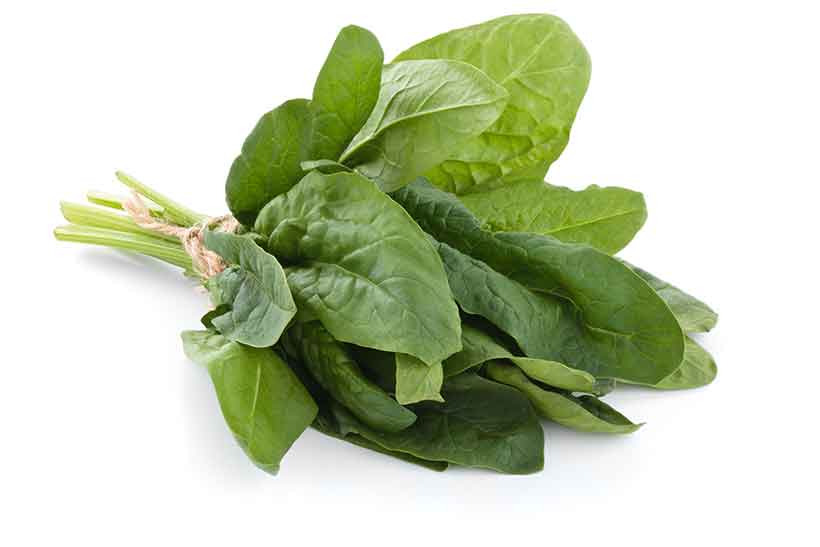
Spinach is among the most nutrient-dense of this list of vegetables.
It is a leafy green that is native to Asia, and it is incredibly high in vitamin A (as beta-carotene) and vitamins C and K1.
Spinach has an impressive nutrient profile too, and it provides a decent amount of almost every micronutrient (62);
- Calories: 23 kcal
- Carbohydrate: 3.6 g
- Fiber: 2.2 g
- Sugar: 0.4g
- Fat: 0.4 g
- Protein: 2.9 g
- Vitamin K: 604% RDA
- Vitamin A: 188% RDA
- Folate: 49% RDA
- Vitamin C: 47% RDA
- Manganese: 45% RDA
52. Sweet Potatoes
Their purple relative from Japan may be healthier, but regular sweet potatoes are one of the most popular veggies.
They have a soft and slightly sweet taste, especially when caramelized.
You can do a lot of things with this tuber, and sweet potatoes work well on their own or in soups, stews, and other dishes.
Their standout nutrient is vitamin A/beta-carotene (63);
- Calories: 86 kcal
- Carbohydrate: 20.1 g
- Fiber: 3.0 g
- Sugar: 4.2g
- Fat: 0.1 g
- Protein: 1.6 g
- Vitamin A: 284% RDA
- Manganese: 13% RDA
- Potassium: 10% RDA
- Vitamin B6: 10% RDA
- Copper: 8% RDA
For a complete guide to sweet potatoes, see the following article:
Sweet Potatoes 101: Nutrition Facts and Health Benefits
Interestingly, the leaves of sweet potatoes are also edible, and they are a popular vegetable in some countries.
For more information on sweet potato leaves, see below:
5 Benefits of Sweet Potato Leaves (and Nutrition Facts)
53. Swiss Chard

Swiss chard is a nutritious leafy green that is a frequent staple in the Mediterranean region.
Typically, chard is used in raw salads but sauteing it tastes good too, and removes some of the bitter flavor.
Swiss chard’s edible leaves are green with a reddish tinge, and they contain a wealth of nutrients (64);
- Calories: 19 kcal
- Carbohydrate: 3.7 g
- Fiber: 1.6 g
- Sugar: 1.1g
- Fat: 0.2 g
- Protein: 1.8 g
- Vitamin K1: 1038% RDA
- Vitamin A: 122% RDA
- Vitamin C: 50% RDA
- Magnesium: 20% RDA
- Manganese: 18% RDA
54. Tomatillo
The tomatillo belongs to the nightshade family of plants alongside tomatoes, eggplants and bell peppers.
With the alternate name of ‘Mexican husk tomato’, tomatillos are a staple in Mexican cuisine.
In terms of appearance, they a little similar to a large green tomato.
Tomatillos are the main ingredient in various central American sauces as well as green salsas.
Nutritionally, tomatillos are a good provider of vitamin C (65);
- Calories: 32 kcal
- Carbohydrate: 5.8 g
- Fiber: 1.9 g
- Sugar: 3.9g
- Fat: 1.0 g
- Protein: 1.0 g
- Vitamin C: 20% RDA
- Vitamin K1: 13% RDA
- Vitamin B3: 9% RDA
- Potassium: 8% RDA
- Manganese: 8% RDA
55. Tomatoes

Tomatoes are juicy, sweet, and slightly sour fruit.
Yes, fruit; botanically speaking tomatoes are fruit.
However, when was the last time you saw a tomato in a fruit salad? While technically tomatoes are a fruit, we use them as a vegetable in cooking.
They’re also a crucial culinary ingredient and a key feature of world cuisine, from Italian to Indian food.
They’re also good for our health and contain the carotenoid lycopene. Although further research is necessary, studies suggest this compound may potentially have anti-cancer and cardioprotective benefits (66).
Interestingly, lycopene is more available in processed tomato products than whole tomatoes.
Nutritionally speaking, tomatoes provide a good amount of beta-carotene and vitamin C (67);
- Calories: 18 kcal
- Carbohydrate: 3.9 g
- Fiber: 1.2 g
- Sugar: 2.6g
- Fat: 0.2 g
- Protein: 0.9 g
- Vitamin C: 21% RDA
- Vitamin A: 17% RDA
- Vitamin K1: 10% RDA
- Potassium: 7% RDA
- Manganese: 6% RDA
56. Turnips
Turnips are a root vegetable that grows in temperate regions around the world.
Turnips are often eaten on their own, either mashed, boiled or stewed. However, they work well in a range of dishes too.
The edible part of this root vegetable is a white bulb that provides a range of nutrients (68);
- Calories: 28 kcal
- Carbohydrate: 6.4 g
- Fiber: 1.8 g
- Sugar: 3.8g
- Fat: 0.1 g
- Protein: 0.9 g
- Vitamin C: 35% RDA
- Manganese: 7% RDA
- Potassium: 5% RDA
- Copper: 4% RDA
- Vitamin B6: 4% RDA
57. Watercress

You wouldn’t guess so from looking at it, but watercress is one of the most nutritious vegetables out there.
Watercress is native to Europe and Asia, and it grows in areas surrounding slow-moving water such as lakes and ponds.
We can often find watercress in salads and soups, and the leaves add a lot of flavor.
This leafy vegetable has a kind of peppery taste, and it’s refreshing due to its high (95%) water content.
Surprisingly, 100g of watercress provides only 11 calories, and yet it’s still one of the most nutrient-rich vegetables (69);
- Calories: 11 kcal
- Carbohydrate: 1.3 g
- Fiber: 0.5 g
- Sugar: 0.2g
- Fat: 0.2 g
- Protein: 2.3 g
- Vitamin K: 312% RDA
- Vitamin C: 72% RDA
- Vitamin A: 64% RDA
- Calcium: 12% RDA
- Manganese: 12% RDA
58. Water Chestnut
- Calories: 97 kcal
- Carbohydrate: 23.9 g
- Fiber: 3.0 g
- Sugar: 4.8g
- Fat: 0.1 g
- Protein: 1.4 g
- Potassium: 17% RDA
- Manganese: 17% RDA
- Copper: 16% RDA
- Vitamin B6: 16% RDA
- Vitamin B2: 12% RDA
Despite the name including “nut”, water chestnuts are a type of aquatic vegetable.
Especially popular in Chinese cuisine, the water chestnut has grown in popularity around the world.
While you can easily find these in canned form, they don’t taste anywhere near as flavorful as fresh water chestnuts. However, the fresh ones should be available at your local Chinese grocery store.
Water chestnuts are quite starchy, and therefore they’re higher in carbohydrate than most vegetables.
Concerning their nutrient profile, they’re a good source of potassium, copper, and Manganese (70).
See this full nutritional guide to water chestnuts for more information.
59. Zucchini (Courgette)

Here is another vegetable that has alternate names across the Atlantic.
Known by the original Italian word ‘zucchini’ in the US and Australia, this vegetable goes by the French name of ‘courgette’ in the UK, Ireland and New Zealand.
But whatever you call it, it still looks and tastes the same.
Zucchini can be enjoyed both raw or cooked, and you can even make vegetable noodles (dubbed “zoodles”) with it.
Zucchini has a fresh, soft and sweet flavor and texture, and it provides a good amount of nutrition too (71);
- Calories: 16 kcal
- Carbohydrate: 3.3 g
- Fiber: 1.1 g
- Sugar: 1.7g
- Fat: 0.2 g
- Protein: 1.2 g
- Vitamin C: 28% RDA
- Vitamin B6: 11% RDA
- Manganese: 9% RDA
- Potassium: 7% RDA
- Folate: 7% RD
Final Thoughts
No matter which vegetable people prefer, all options can help to improve the overall dietary pattern. Vegetables tend to offer high amounts of essential nutrients for very few calories, and they can help to ensure essential vitamin and mineral requirements are met.
But there is no need to include any specific individual vegetable, and it is probably better to just focus on the ones that you enjoy the most.
To learn about some differences between raw and cooked vegetables, see this guide here.
Also, learn about the key nutritional differences between fresh and frozen produce.

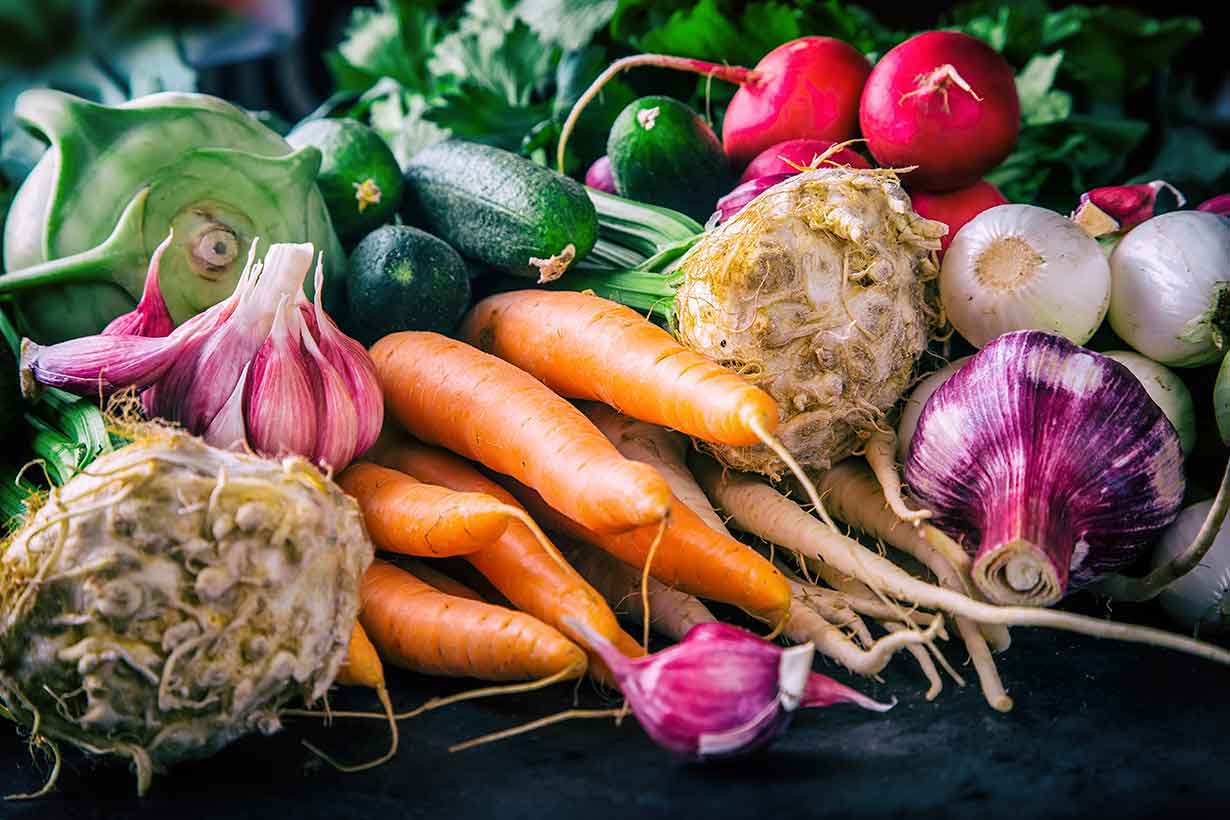
it really help me in completing my project. thnxxxx🙂🙂🙂
No problem, Sandeep. Glad it helped you!
Thanks for this. I am a vegetable lover, just as well with all they have to offer….
Me too! Thanks for commenting.
Where did you get the information from ? Excellent job thanks!
No problem! You can click the little numbers in parentheses (1) for all the references/data sources.
Does anyone know where I can find these facts listed exactly like this in a book? Want to give as a present. Would love to have an A-Z list of veggies with their nutritional facts. Thank you!!!
Very helpful since I have diabetes.
Green Peas?
Good suggestion! I will add them in.
This presentation is so helpful. Many thanks Michael.
I have been vegetarian for six years, mainly for health and longevity. I have been planning to work out all the nutrients that I am eating. I stumbled upon this article that has been so informative, adding to my knowledge of how the body functions and the best way to assist it.
French beans? Are chick peas, haricot, kidney beans classed as vegetables?
Hi Jim,
Thank you for your comments. Although those beans are sometimes classed as vegetables in their immature (green) state, they’re more commonly categorized as legumes.
If it helps, you can find the different types of legumes here: https://www.nutritionadvance.com/types-of-legumes/
Hi Michael
I’m busy doing some research on the nutrients of vegetables. This is a great help, thank you. It’s exactly what I’m looking for. Do I cite you as the author or Nutrition Advance?
Hi Ayesha,
I’m glad it helped and good luck with your research. In answer to your question, either are fine – so just whatever you prefer.